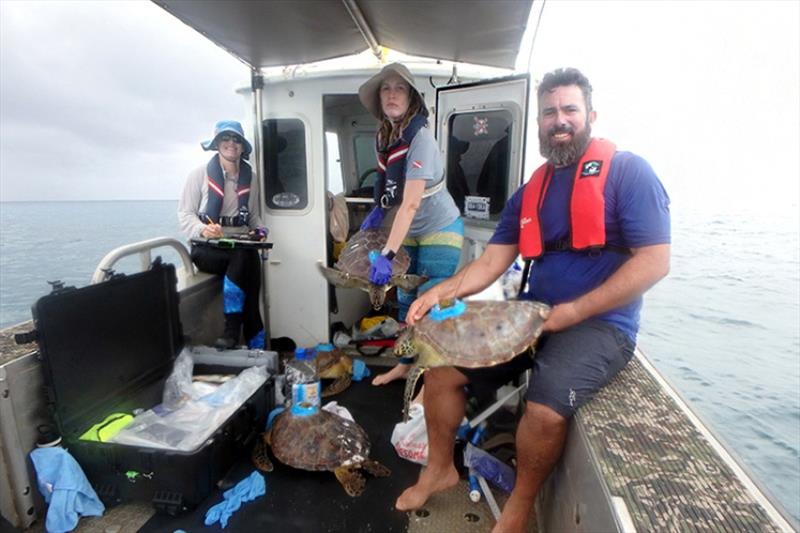
World's most ambitious satellite telemetry study of foraging green and hawksbill sea turtles
by NOAA Fisheries 29 Sep 2019 14:42 UTC

NOAA researchers © NOAA Fisheries
NOAA Fisheries is pioneering what has become the most rigorous satellite tagging study of foraging green sea turtles and hawksbill sea turtles in the world.
NOAA researchers Drs. Alexander Gaos, Summer Martin, and Camryn Allen recently returned from their latest expedition to Guam and the Commonwealth of the Northern Mariana Islands (CNMI). When they see a turtle, they free dive and attempt to hand-capture it. Local resident and freediving expert Jessy Hapdei leads the hand-capture effort. He has been involved in the project since its inception.
The most recent survey trip took place in early September 2019. The research team planned the mission to coincide with good weather dates. The eastern and northern coasts of the islands of Guam and Saipan have been impossible to access in the past, because challenging weather conditions persist during much of the year. These areas are important to the regional study of sea turtle movement ecology.
The team's planning efforts were rewarded with six outstanding field days—they captured, measured, and tagged 19 green turtles and two hawksbill turtles. They used flipper tags as well as satellite tags. Satellite tags give information on the fine-scale movements of turtles for several months. Flipper tags can last years or even decades and allow scientists to identify turtles long after the satellite tag has fallen off.
Since 2011, the research team has observed more than 600 turtles. They have hand-captured more than 200 and equipped 125 with satellite tags. Of the turtles equipped with satellite tags, 111 have been green turtles and 14 have been hawksbill turtles.
In addition to colleagues at the Pacific Islands Regional Office, partners on this project include the following:
- CNMI Department of Lands and Natural Resources.
- FishGuyz Scuba & Charter.
- Gen-X Sports Charter.
- Guam Department of Agriculture Division of Aquatic and Wildlife Resources.
- Jessy's Tag Services.
- Naval Base Guam.
- Navy U.S. Pacific Fleet Environmental Readiness Office.
- University of Guam/SeaGrant.
- U.S. Fish and Wildlife Service.
All work conducted under scientific permits U.S. FWS TE-72088A-2, NMFS 21260, and DAWR SC-MPA-19-004.
For additional information on this research, contact Dr. Alexander Gaos.